Every year the CSEG Foundation Scholarship Committee awards scholarships to deserving candidates in continuing education across Canada. In the 2017, 55 high-quality applications were received from across Canada and a total of 14 scholarships were awarded. Two awards of $500 were granted to high school graduates entering university in September 2017. Eleven awards of $2,000 were made to geophysics students enrolled in university degree programs and one award of $1,000 was made to a student technologist.
In order to qualify for a university student award, students must be enrolled at a Canadian university in an academic program leading to an exploration geophysics career in industry, teaching, or research. Scholarships are awarded on the basis of academic performance, financial need, interest in geophysics and extra-curricular activities. In 2012, the Foundation introduced a new scholarship in response to the emergence of geoscience technology programs across the country. To be eligible, students must be enrolled full-time at an accredited educational institution in Canada leading to a degree in geoscience technology (oil and gas, mining, etc.). In addition, the Foundation awards up to two university entrance scholarships, aimed at high school graduates.
The CSEG Scholarship Committee is part of the CSEG Foundation, and is run each year by a minimum of three volunteers tasked with assessing scholarship applications. Scholarships are funded primarily through corporate and individual donations, and through interest generated by memorial trust funds. If you are interested in contributing, we are gratefully accepting donations. Please contact the committee for a pledge form, donate via cseg.ca or mail funds to the CSEG office (cheques payable to ”CSEG Foundation”). We ask that you clearly indicate that the funds are for a CSEG scholarship. All donations are tax deductible and charitable donation receipts will be issued.
The CSEG Scholarship Committee would like to thank all of the generous scholarship sponsors for their support in 2017. Such sponsorship contributes greatly to the education of geophysics students, and to the advancement of the field of geophysics.
High School Scholarships – 2017
High school recipients of $500 scholarships, entering into university science programs in the fall of 2017 were:
Applications open March 1 and the deadline for applications is June 15. Awards will be allocated July 1 for September 2017 payment against university tuition fees.
| Recipient | Institution | Sponsor |
| Basel Moukaskas | University of Alberta | Perry & Karen Kotkas |
| Lauren Coulombe | University of Calgary | Perry & Karen Kotkas |
High School Scholarships – 2018
Up to two high school scholarship awards of $500 will be made in 2018. To be eligible, students must be high school students entering into a university program in Fall 2018. In addition, they must be entering into a science-based program, and/or be a dependent of a CSEG member.
Applications opened April 15; the deadline for applications is June 15, 2018. Awards will be allocated July 15 for September 2018 payment against university tuition fees.
Ian Watson, CSEG Foundation Director and Scholarship Committee Chair Craig Mosher, Senior Trustee Rob McGrory, Junior Trustee CSEGF Scholarships: csegf.scholarships@shaw.ca
2017 Recipients
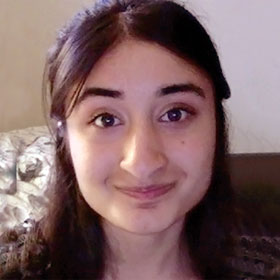
Aamna Sirohey
University of Western Ontario
Sponsored by CSEG Foundation
Aamna Sirohey is a fourth-year Geophysics student at the University of Western Ontario. She is currently completing an honours thesis project focused on developing a joint inversion algorithm to calculate mineralogy from well log data and uses this information to predict the brittleness of a rock. Ultimately, she hopes this will provide some insight into the efficacy of hydraulic fracture treatments as well as the risks posed by induced seismicity. She has previously been involved in research pertaining to seismic hazard assessment through the receipt of an NSERC Undergraduate Student Research Award (USRA). Aamna enjoys the challenge posed by geophysical problems and the creativity needed to innovate solutions. At this point, she does not know precisely which particular path her career in geophysics will lead her down. She will make a decision in the not-too-distant future.
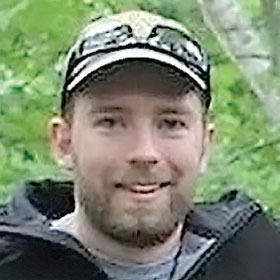
Callum Walter
Queen’s University
Sponsored by “In the Rings” Doodlespiel Curlers
Callum Walter completed his Bachelor’s degree in Geological Engineering from Queen’s University in Kingston, Ontario. Presently, Callum is an Engineer-In-Training (EIT) and pursuing a Ph.D. in Applied Geophysics at Queen’s University under Dr. Alexander Braun and Dr. Georgia Fotopoulos. His primary research interest involves reliably and practically integrating unmanned aerial vehicles (UAVs) with geophysical methods applied to mineral and petroleum exploration. Specifically, his research focuses on developing high-resolution UAV magnetometry surveys and quantifying the benefits of using 3-D magnetic datasets in inversion modeling. After completing graduate studies, Callum plans to either begin a career in the Canadian geophysics industry and/or continue researching at a Canadian institution. Callum’s personal interests include hiking, canoeing, fishing, team sports, astronomy, cartography and teaching.
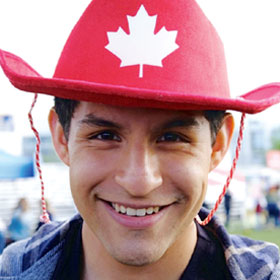
Ederson Villamizar
Memorial University of Newfoundland
Sponsored by Athena Resources
Ederson Villamizar is a geophysical engineer from Simon Bolivar University, Venezuela and currently working on his Masters’ in Geophysics at the Memorial University of Newfoundland. Ederson’s thesis project focuses on creating a 3-D Lithospheric model of Western Newfoundland using gravity, magnetic, seismic and well data. He loves geophysics, especially seismic methods and interpreting seismic data is one of his passions. This interest led him to take part in the Imperial Barrel Award USB team in 2016. He is the president of the SEG chapter at MUN and has volunteered with several organizations on and off campus. Ederson speaks five languages, enjoys fitness activities and is learning how to play piano.
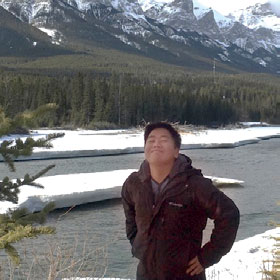
Kevin Lugtu
University of Calgary
Sponsored by Paramount Resources
Kevin Lugtu is currently attending the University of Calgary and is completing his third year of an undergraduate degree in Geophysics. Inspired to be a geophysicist by Seismic in Motion, Kevin is embarking on a journey to learn more about geophysical phenomenon and seismic applications. Kevin plans to switch to an Honours B.Sc. in Geophysics to participate in undergraduate research either in urban planning and optimization, or in seismic processing. Upon completion of his undergraduate degree, Kevin plans to continue his education in Geophysics or Engineering.
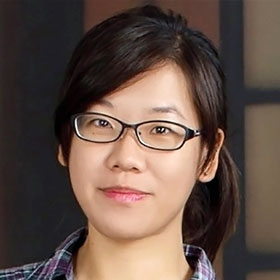
Hilary Chang
Memorial University of Newfoundland
Sponsored by Imperial Oil
Hilary Chang is a third-year undergraduate student at Memorial University of Newfoundland (MUN) majoring in Earth Sciences and minoring in Physics. Throughout the courses she has taken, she developed an interest in geophysics including interpreting seismic, electromagnetic survey data and simulating seismic waves by programming. Hilary participates in various research projects in the Earth Sciences Department of MUN. She is focusing on seismic interpretation, wave equation modeling, processing and inversion algorithms and plans to do her honours thesis on related subjects. She plans to pursue her Master’s degree in Geophysics in Canada after graduation. Hilary likes the outdoors and was dedicated in promoting water activities in her home country, Taiwan. She is a lifeguard instructor, and volunteers in swimming lessons for people with disabilities.
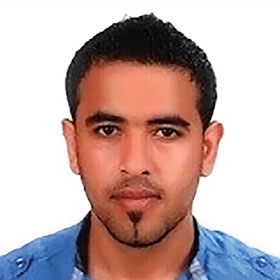
Oday Dabboor
Queen’s University
Sponsored by CSEG Doodlebug Golfers
Oday Dabboor is in his 2nd year of an MSc in Geophysics in the department of Geological Science and Geological Engineering at Queen’s University, Kingston/Ontario. He received his B.Sc. degree in 2016 from the Department of Petroleum and Natural Gas Engineering from the Middle East Technical University, Ankara/Turkey. Currently, he is doing his research on sub-surface fluid monitoring in Steam Assist Gravity Drainage reservoirs (SAGD). Also, he has been working on “Forward Modelling Asteroid Density Distribution and Surface Boulder Detectability from Asteroid Surface and Orbital Gravimetry”.
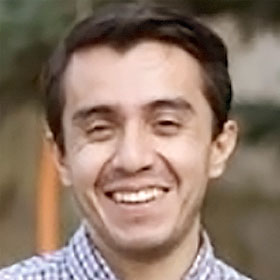
Jorge Monsegny Parra
University of Calgary
Sponsored by Repsol
Jorge Parra received his B.Sc. degree in Computer Science and his M.Sc. degree in Mathematics from the National University of Colombia in Bogota, Colombia. He worked as a geophysical contractor in the Colombian Petroleum Institute (ICP-Ecopetrol) in Piedecuesta, Colombia for 10 years developing software for seismic tomography, fracture characterization, oil field optimization and time-to-depth conversion, and applying them to real data. He joined CREWES in September 2017 to pursue his Ph.D. in Geophysics with Dr. Daniel Trad and Dr. Don Lawton. His current academic interests include: elastic least squares RTM, elastic FWI and survey design multi-optimization.
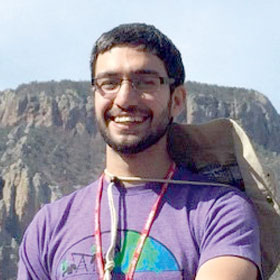
Ruhollah Keshvardoost
McGill University
Sponsored by Rob Shugg
Ruhollah Keshvardoost received a B.Sc. in Mineral Exploration Engineering from University of Tehran, Iran and a M.Sc. in Geophysics from Auburn University, Alabama where he studied site response in the Seattle and Tacoma basins in Washington. Currently, he is a Ph.D. student in Geophysics at McGill University. His research mainly involves seismic event triggering associated with hydraulic fracturing in Western Canada Sedimentary Basin (WCSB).
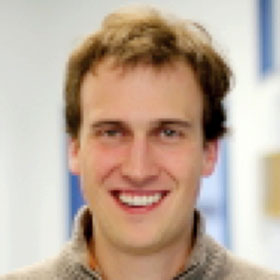
Scott Keating
University of Calgary
Sponsored by TGS
Scott Keating completed his B.Sc. in Physics at the University of Alberta in 2014 and began an M.Sc. in Geophysics at the University of Calgary in the same year under the supervision of Kris Innanen in the CREWES consortium. In 2016, he transferred to a Ph.D. program. His research is focused on seismic full waveform inversion, with other interests including least squares migration, multiple prediction and removal, and distributed acoustic sensing.
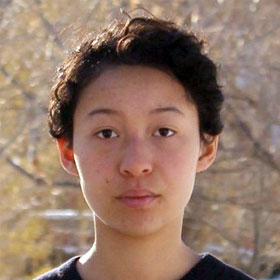
Tess King
University of Toronto
Sponsored by CSEG Doodlebug Golfers
Tess King is a third year undergraduate at the University of Toronto, double majoring in Physics and Physical Geography with a minor in geographic information systems. Originally, Tess started out in geosciences, but gradually gravitated towards physics and physical geography, and is now combining her love of the outdoors with her passion for understanding and exploring all things related to physics. Currently Tess is involved in geophysics research, examining seasonal changes on the shallow subsurface by conducting resistivity and ground penetrating radar surveys of areas around the St. George campus at the University of Toronto under the direction of Professor Charly Bank. Tess hopes to continue learning about geophysics and the Earth through further course work as well as working under different professors.
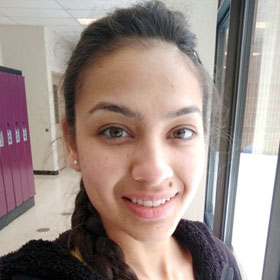
Snehpreet Kaur
SAIT
Sponsored by CSEG Foundation Scholarship Committee
Snehpreet Kaur is a first-year international student in Geoscience Information Technology at SAIT in Calgary, Alberta. She completed her Bachelor's degree in India in Information Technology and spent a year in Ontario completing a diploma in Wireless Information Networking. After the completion of her diploma at SAIT, she wishes to contribute in the oil and gas industry.
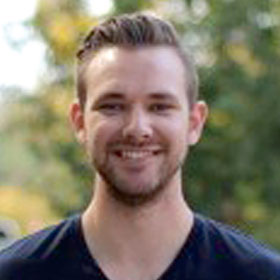
Tyler Spackman
University of Calgary
Sponsored by Andreas Cordsen
Tyler Spackman earned a B.Sc. (with Distinction) in Geophysics from the University of Calgary in 2014. He is currently a second-year M.Sc. student with CREWES at the University of Calgary, working under the supervision of Don Lawton. His research focusses on the utilization of continuous seismic sources as tools for reservoir monitoring in carbon sequestration projects. Additionally, he is interested in other emerging technologies in geophysics, such as the processing and interpretation of seismic data acquired using DAS fiber optics. Tyler has gained professional work experience in both seismic processing and interpretation through four summer internships, most recently at Repsol. In his spare time, Tyler enjoys an active lifestyle, including hiking, running, basketball, and disc golf.











Share This CSEG Report